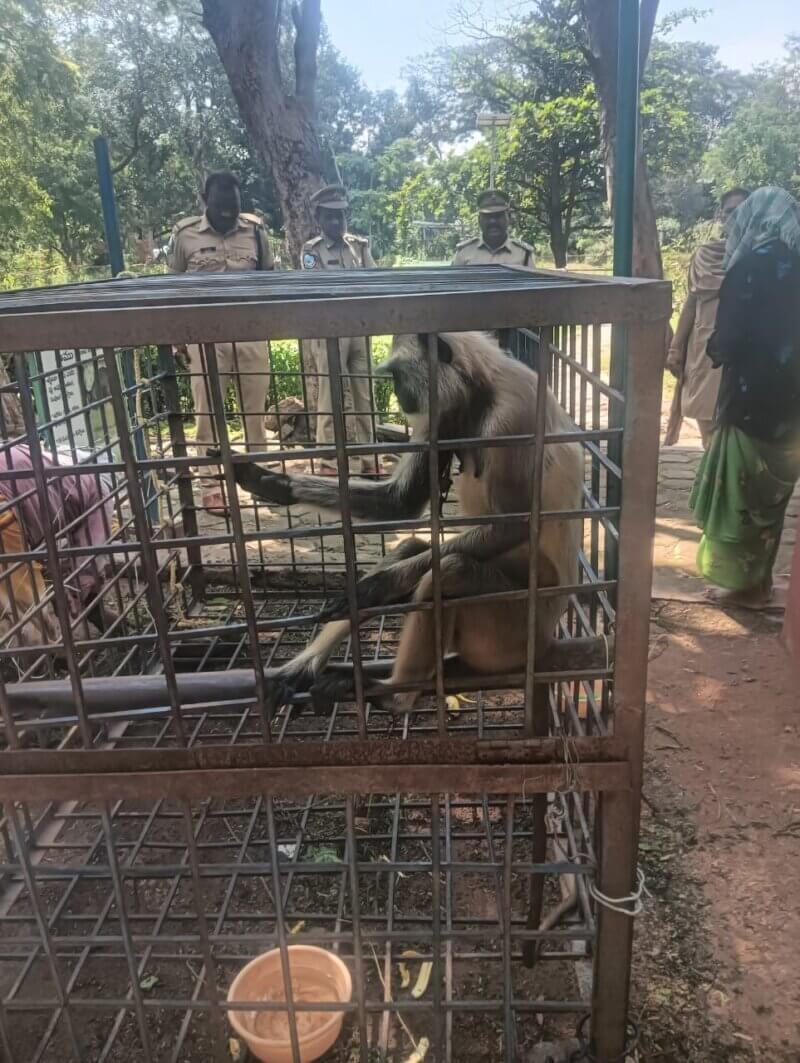Karimnagar Forest Division Books Man for Caging a Hanuman Langur, Following PETA India Complaint
After being alerted about a gray langur, commonly known as a Hanuman langur, who was chained inside a cage for over two years, PETA India immediately alerted the Karimnagar Forest Division of the Telangana Forest Department to register a preliminary offense report (POR) against the accused. A POR has been registered under sections 2(5), 2(16)(b), 9, 39, 50, and 54 of the Wildlife (Protection) Act (WPA), 1972. The primate was rescued and rehabilitated and later released into their natural habitat after following necessary protocols including health checks. Gray langurs are protected under Schedule II of the WPA, 1972, which makes capturing them, keeping them in captivity as “pets,” or forcing them to perform an offense punishable by up to three years in prison, a fine of up to Rs 1 lakh, or both.
In the forests, Hanuman langurs typically live in groups of dozens of individuals. They spend much of their time playing, grooming, and engaging in other social activities. Family members are always on the lookout for danger and quickly rush to defend their loved ones.
Monkeys kept in people’s homes as “pets” or forced to dance are often chained or confined to cramped cages. When used for entertainment, they are typically trained through beatings and food deprivation, and their teeth are commonly pulled out to prevent them from defending themselves. In 1998, the central government issued a notification under The Prevention of Cruelty to Animals Act of 1960, stating that monkeys and several other species of wild animals are not to be exhibited or trained as performing animals.
Ways to Help an Animal in Distress









